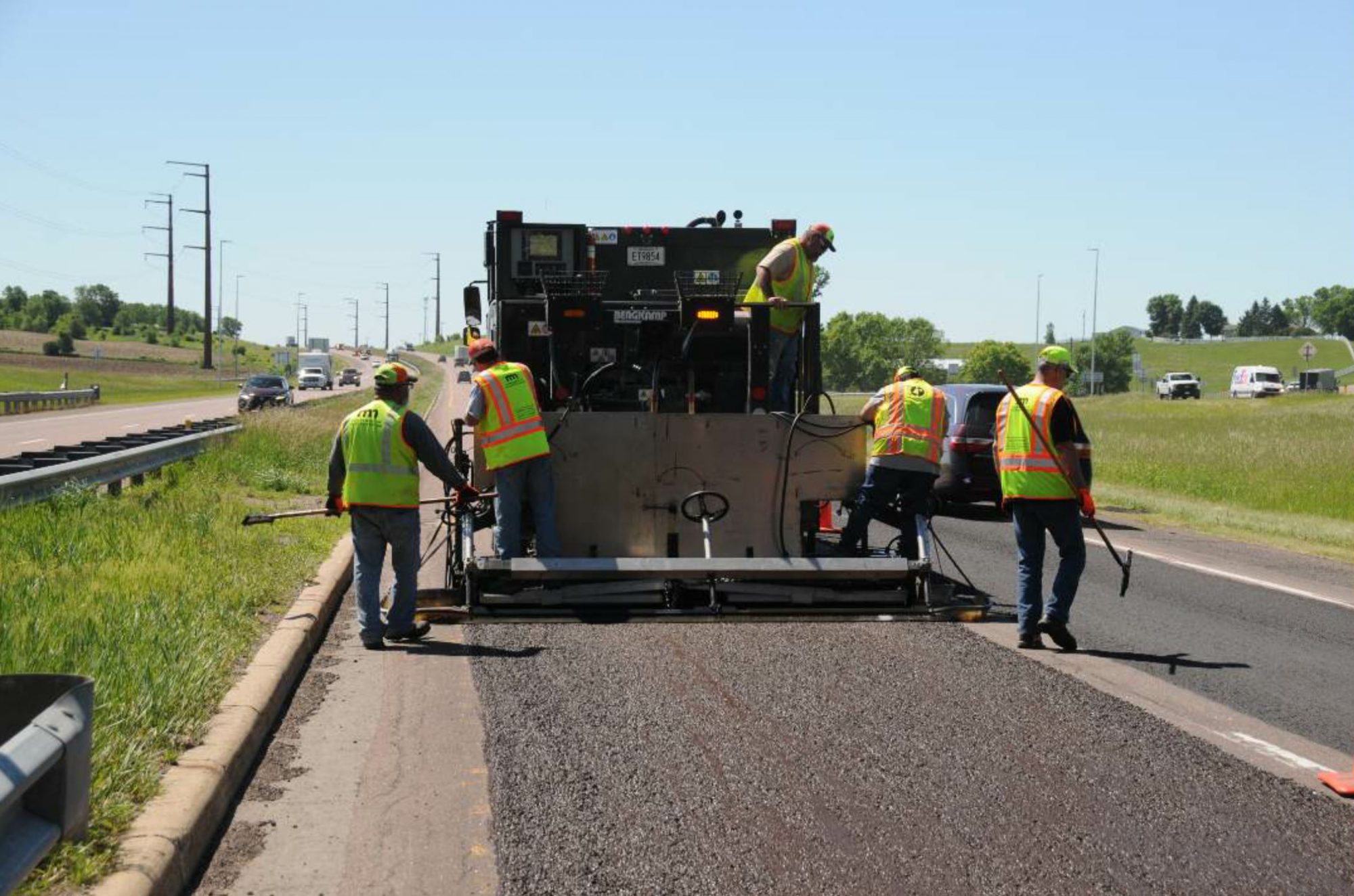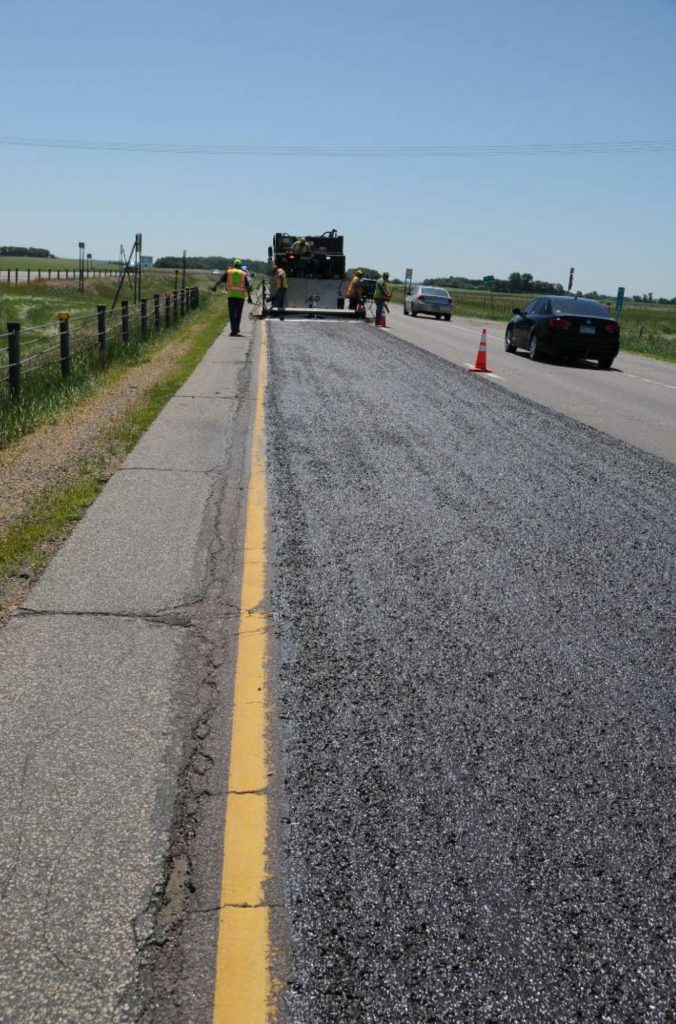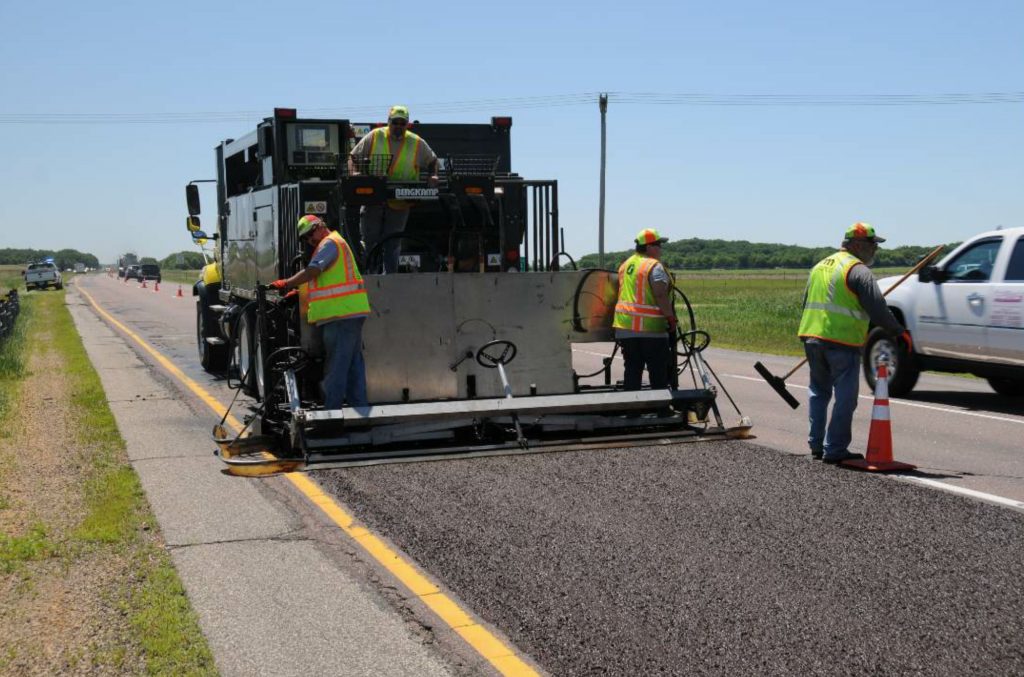Bergkamp M310E Preserves Minnesota Roads
BY Bergkamp

Like many agencies, the Minnesota Department of Transportation (MnDOT) has addressed its road maintenance needs in a number of ways. As the organization’s reliance on pavement preservation has grown, it has come to practice a variety of methods to keep its network of roads in good condition.
“For the Minnesota Department of Transportation, and across the country, local governmental paving crews are slowly becoming a thing of the past,” said Paul Nolan, Research Project Supervisor, MnDOT Materials and Road Research.
He explained that weather plays a role in funds availability for the northern-climate state at the end of its fiscal year, which is June 30. The amount of overtime paid for snow and ice removal, as well as funds spent on roadway anti-icing chemicals and salt, all affect the available funds for road maintenance and paving as spring and summer arrive, and the fiscal year is drawing to a close. To make fiscal planning for projects a little easier to predict, MnDOT staff decided to retain specific equipment for preserving and maintaining pavements. According to Nolan, for certain projects, the MnDOT highway maintenance management decided to purchase a micro surfacing machine.
The versatility of micro surfacing as a preventive maintenance strategy appealed to MnDOT, as the treatment preserves pavement, seals cracks and locks out moisture. The method is beneficial for safety improvements, such as adding surface friction, rut removal, and wedge paving on sunken bituminous shoulders along a concrete mainline. Nolan said it also is an inexpensive application to fill in pavement until more permanent solutions can be made.

The CSS-1hLM emulsion MnDOT’s micro surfacing crews work with provides more flexibility due to its slower-setting nature.
“Rock and mineral filler can be bought and stockpiled throughout the year,” Nolan said. “Having the dry material on hand requires only the emulsion to be purchased at or near the time of the project. This process has allowed the crews to be out working in late April, May, and June. We’re very fortunate to have quality rock sources readily available that react well with the emulsion.”
MnDOT’s Incremental Micro Surfacing Progression
MnDOT’s first micro surfacing paver was a VSS Minimac Micro-paver. Nolan described the machine as a Zamboni-sized paver used to fill in one wheel rut at a time. He said it proved to be helpful in filling in deteriorated and raveling cold-joints between lanes. “This unit served MnDOT well, but we are retiring it because truck-mounted micro surfacing units can do most everything that the smaller Minimac can do, plus much more,” he explained.
The agency purchased its first truck-mounted micro surfacing paver, a Bergkamp M310, in 2012. The machine was shared between the MnDOT Metro (Minneapolis and St. Paul) District and the St. Cloud District 3. In September 2018, MnDOT took possession of a new Bergkamp M310E truck-mounted micro surfacing machine, which stays in the Metro District; the older Bergkamp machine will remain in the St. Cloud District.
The M310E truck-mounted slurry seal and micro surfacing paver receives power from a Tier 4 truck engine that fulfills stringent emissions regulations. Bergkamp developed the M310E with PTO-driven hydraulic pumps that allow elimination of the side engine. This feature, along with the Tier 4 truck engine technology, allows customers to reduce their emissions reporting and equipment maintenance needs.
MnDOT uses a two-fold approach with its use of micro surfacing for pavement preservation. For major roadways, the agency bids the work out to contractors. For smaller areas such as ramps, frontage roads, and intersections, MnDOT uses its own M310 and M310E micro surfacing equipment.
“The work that our machines perform are small projects, like exit and entrance ramps, hard-to-get-at locations, and intersections,” Nolan said. “MnDOT still contracts out several hundred lane miles of micro surfacing each year by contract. Our truck-mounted machines are not set up to do continuous paving for larger projects, and it would not be practical to try and get the contractors in to do the small-footprint projects that we now handle.”
The benefits of handling its own micro surfacing for small projects have proven themselves to MnDOT over the past six years. Nolan listed some of the benefits:
- MnDOT has the ability to stockpile dry materials when surplus funds are available.
- Fewer employees are needed to run the crew.
- Micro surfacing is ideal for smaller areas that need attention such as ramps, frontage roads, intersections.
- Micro surfacing improves friction, fills in rutting and small potholes, and works well for cold-joint repair.
- The treatment has a lifecycle of 5 to 7 years.
- Truck-mounted pavers have the ability to drive to the jobsite.
- Micro surfacing sets up quickly; the area can open back up to traffic within a couple hours.
- True micro surfacing can be applied at night, versus other treatments, which must be applied during daytime hours.

The Bergkamp EMCAD system allows the operator to control the production with simple adjustments, while the driver progresses at an optimized rate of speed to ensure faster project completion.
Nolan noted that MnDOT’s micro surfacing paving crews have been using a CSS-1hLM emulsion. It is a slower-setting emulsion that allows them a little more time to work with the product. Because of the small-job nature of most projects, this slower setting time provides some flexibility to the crews. Alternatively, MnDOT’s contracted micro surfacing work specifies rapid-set emulsions—both CQS -1hP and CQS-1p. Most of the contract work comprises long straightaways, covering greater distance and with much less handwork, so a faster-setting emulsion is ideal.
“MnDOT’s Bergkamp micro surfacing pavers provide a great benefit for the people in the metro-Minneapolis area,” Nolan said. “They are allowing us to proactively maintain and even improve our streets and roadways. And we are able to work within our fiscal budget constraints. This is a win-win for our districts.”
